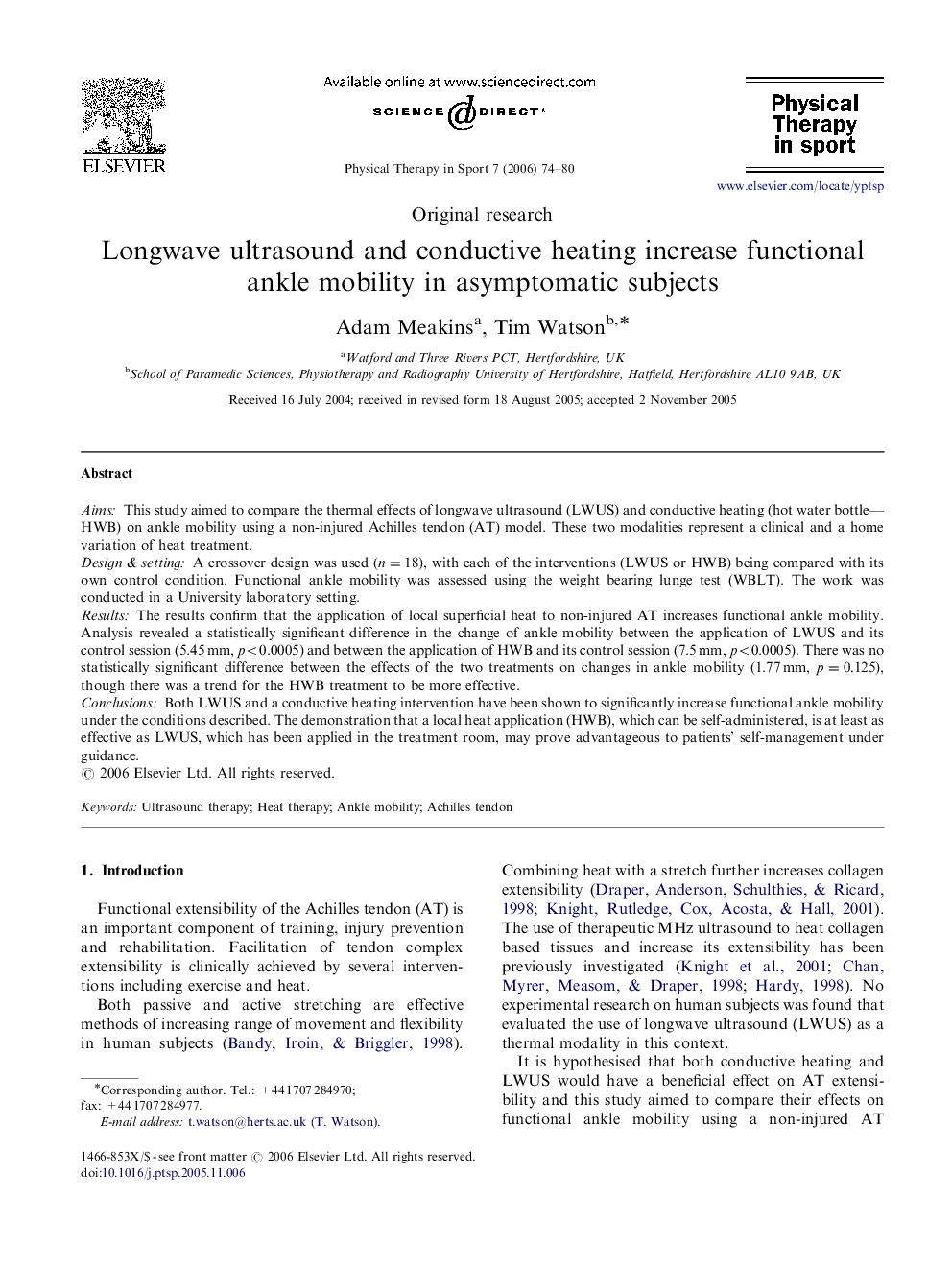| Article ID | Journal | Published Year | Pages | File Type |
|---|---|---|---|---|
| 2711455 | Physical Therapy in Sport | 2006 | 7 Pages |
AimsThis study aimed to compare the thermal effects of longwave ultrasound (LWUS) and conductive heating (hot water bottle—HWB) on ankle mobility using a non-injured Achilles tendon (AT) model. These two modalities represent a clinical and a home variation of heat treatment.Design & settingA crossover design was used (n=18n=18), with each of the interventions (LWUS or HWB) being compared with its own control condition. Functional ankle mobility was assessed using the weight bearing lunge test (WBLT). The work was conducted in a University laboratory setting.ResultsThe results confirm that the application of local superficial heat to non-injured AT increases functional ankle mobility. Analysis revealed a statistically significant difference in the change of ankle mobility between the application of LWUS and its control session (5.45 mm, p<0.0005) and between the application of HWB and its control session (7.5 mm, p<0.0005). There was no statistically significant difference between the effects of the two treatments on changes in ankle mobility (1.77 mm, p=0.125p=0.125), though there was a trend for the HWB treatment to be more effective.ConclusionsBoth LWUS and a conductive heating intervention have been shown to significantly increase functional ankle mobility under the conditions described. The demonstration that a local heat application (HWB), which can be self-administered, is at least as effective as LWUS, which has been applied in the treatment room, may prove advantageous to patients’ self-management under guidance.
